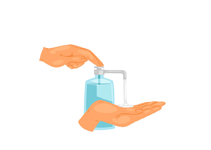Dexmedetomidine
Introduction
Dexmedetomidine is a prescription medicine widely used as a sedative in intensive care units (ICU) and during surgical procedures. It helps patients stay calm and relaxed without causing major breathing problems, making it safer compared to many other sedatives. Doctors use Dexmedetomidine to manage anxiety, provide sedation before and after surgery, and ensure patient comfort during medical treatments. It works by calming certain parts of the brain and nervous system, allowing smoother medical care and recovery.
Medicine Not Available for Dexmedetomidine
Uses of Dexmedetomidine
- Provides sedation during surgeries and procedures
- Used for short-term sedation in ICU settings for mechanically ventilated patients
- Helps reduce anxiety and agitation during medical treatments
- Reduces the need for general anesthesia in certain procedures
- Provides calming effects for patients in critical care
How Dexmedetomidine works
Dexmedetomidine works by stimulating alpha-2 adrenergic receptors in the brain, which reduces the release of norepinephrine and leads to a calming effect on the body. This action helps reduce anxiety, sedates the patient, and allows for relaxation without causing deep sedation or suppressing respiratory function. It also has analgesic effects, making it useful for pain management during short-term sedation.
Benefits of Dexmedetomidine
- Provides effective sedation without the need for general anesthesia
- Reduces anxiety and agitation in critically ill patients
- Helps maintain stable blood pressure and heart rate
- Minimizes the need for traditional sedatives and analgesics
- Promotes better patient comfort in ICU and procedural settings
How to take Dexmedetomidine
Dexmedetomidine is administered via injection or infusion by healthcare professionals in a hospital or clinical setting. The dosage and infusion rate depend on the patient`s condition, procedure, and sedation level required. It is usually started at a low dose and gradually adjusted for optimal effect. This medication is typically used under strict medical supervision, and only healthcare providers are authorized to adjust the dosage.
Type of Dosage Available
- Injection
- Infusion (administered intravenously)
Side effects of Dexmedetomidine
- Low blood pressure (hypotension)
- Bradycardia (slow heart rate)
- Drowsiness or sedation
- Dry mouth
- Nausea or vomiting
- Withdrawal symptoms if discontinued abruptly
Safety advice
- Dexmedetomidine should be used only under medical supervision in a hospital or clinical setting
- Monitor blood pressure and heart rate regularly during administration
- It should be avoided in patients with severe cardiovascular issues, including low heart rate or hypotension
- Consult your doctor if you have liver or kidney problems before use
- Do not use this medication if pregnant or breastfeeding unless prescribed by your healthcare provider
Frequently Asked Questions (FAQs)
Q. What is Dexmedetomidine used for?
A. Dexmedetomidine is used for sedation and anesthesia management, particularly in ICU settings and during surgeries, to reduce anxiety and provide calming effects.
Q. How does Dexmedetomidine work?
A. Dexmedetomidine works by stimulating alpha-2 adrenergic receptors in the brain, leading to reduced norepinephrine release and providing sedation without deep anesthesia.
Q. What are the side effects of Dexmedetomidine?
A. Side effects may include low blood pressure, slow heart rate, drowsiness, dry mouth, nausea, or vomiting. Consult your healthcare provider if any adverse effects occur.
Q. How is Dexmedetomidine administered?
A. Dexmedetomidine is administered intravenously by injection or infusion under medical supervision in a hospital or clinical setting.
Q. Can Dexmedetomidine be used at home?
A. No, Dexmedetomidine should only be used under the supervision of healthcare professionals in a clinical or hospital setting due to the need for monitoring vital signs.
Disclaimer : Zeelab Pharmacy provides health information for knowledge only. Do not self-medicate. Always consult a qualified doctor before starting, stopping, or changing any medicine or treatment.
Download India's most affordable pharmacy app
- Compare with medicine prices
- Save upto 90% on your medicine bills

Temperature Controlled storage and delivery

Regular Sanitization

Disinfected Packaging













 Added!
Added!